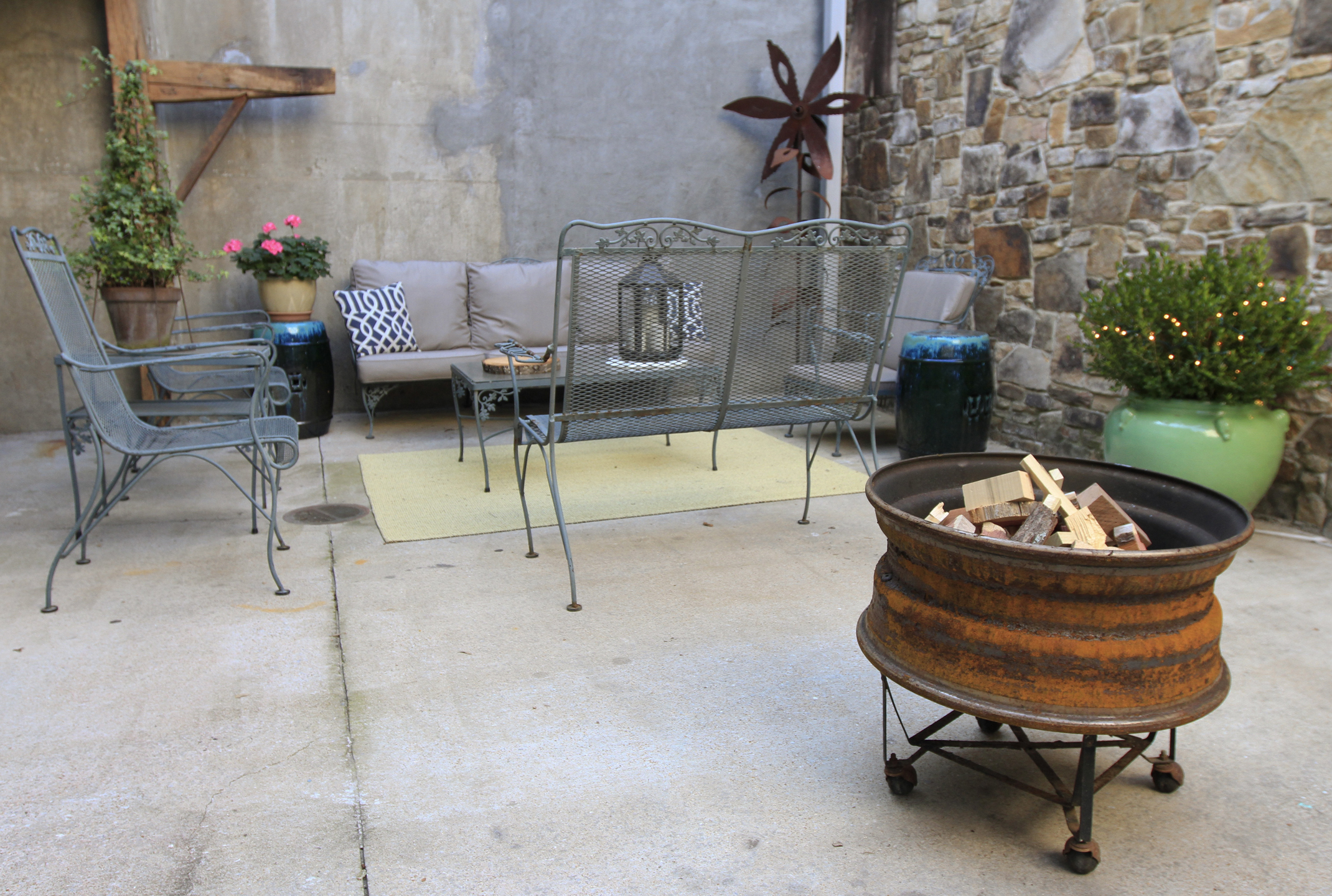Honey-Do Checklist• Take down patio umbrellas. Give them a good wash; attack mildew with vinegar, warm water and a brush. Make sure umbrellas are dry before storing in a dry spot for winter.• Assess, repair, replace and store outdoor furniture. Check for repairs that can be made in winter. You might want to re-stain or repaint. The off-season is when furniture is discounted, so it's a good time to replace worn or damaged pieces. Clean all furniture before storing.• Check the condition of furniture covers. Replace torn or stained covers. Wash, fold and store them in a dry place.• Bring in ceramic and terra cotta pots and birdbaths. If they will be stored in a cold location, such as a storage shed or the garage, empty them first so they won't crack during a freeze.• Cover or store the grill. Granted, the South's mild winters promote grilling year-round, but at the least invest in a good protective cover for the grill. For those who aren't cold-weather cooks, store the grill in a shed or garage. Make sure there have not been any hot coals in it for weeks. If your grill is powered bypropane, do not leave the tank on the ground or store it indoors.• Prepare the firepit. Split some logs, stack them and store them in a nearby dry spot. If you have a portable fire pit, give it a good cleaning, and make sure the cover is in good shape.• Prep your patio door. Switch screen doors for storm doors. Make sure weather stripping is tight to prevent drafts. *Put out a durable welcome mat, and add another mat inside the door for snowy/wet feet.Source: Houzz.com, online interior design and decorating ideas
Many families will be decorating their homes for Christmas this weekend, but before getting your ho-ho-ho on, there are outdoor chores that should be done to ensure your patio furniture weathers the winter well.
Mike Hartley, manager of The Patio Shoppe, says that, in our climate, many homeowners don't store their patio furniture but use protective covers instead
"It's recommended that, before storing and covering, you wash the furniture with warm water and soap, using a soft-bristle brush and sponge," said Hartley. "Wash frames, any cushions, vinyl strapping and any type of fabric such as sling swings, umbrellas and awnings."
All-metal furniture, such as wrought iron, that doesn't contain any fabric pieces shouldn't be covered, he said.
"I don't recommend covering it because it's steel and, if you cover it, moisture builds up under the cover, which can promote rust," Hartley said.
"Most people don't cover their cast aluminum furniture, but putting a protective cover over that does help preserve the finish from dulling."
Any concerns that washing cushions could promote mildew can be alleviated, he said, by thoroughly drying items before storing. "Mildew is a fungus that grows on dirt. That's why it's important to wash cushions periodically, especially before storing," said Hartley.
If your outdoor furniture is wicker, ehow.com recommends applying two coats of paint every three years. It doesn't matter whether it's brushed or sprayed on. After the coats have dried, apply one coat of marine varnish.
If you have natural wicker and don't want to paint it, just mist it with water from a spray bottle, standing three feet away. Do this once every three weeks to prevent the wicker from becoming dry and brittle.
